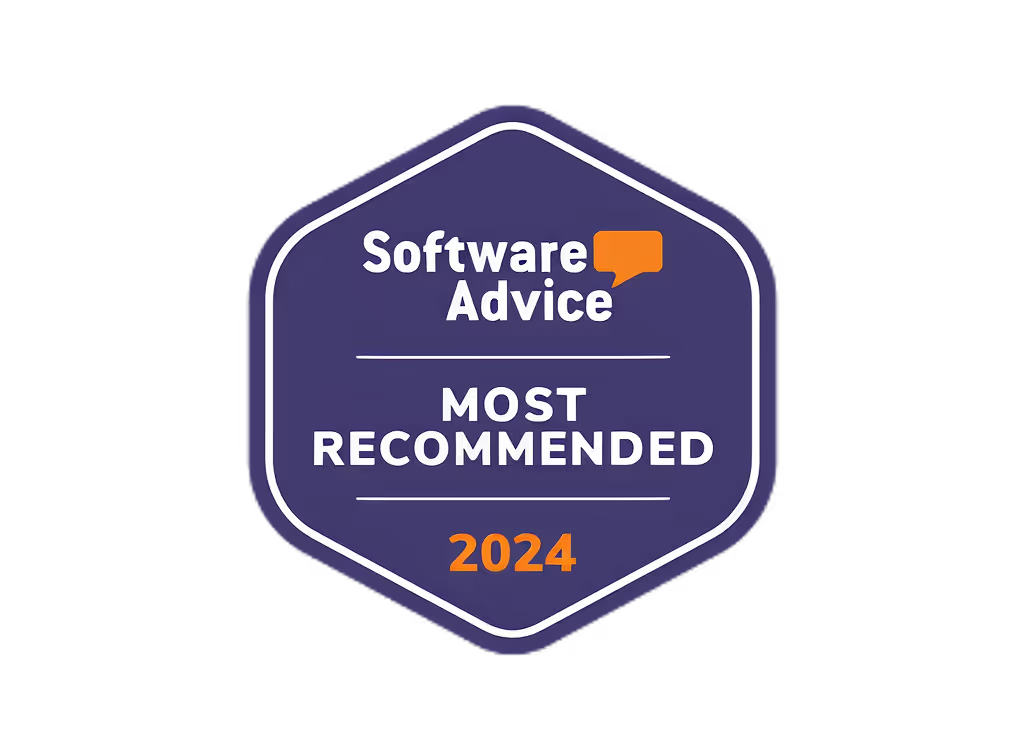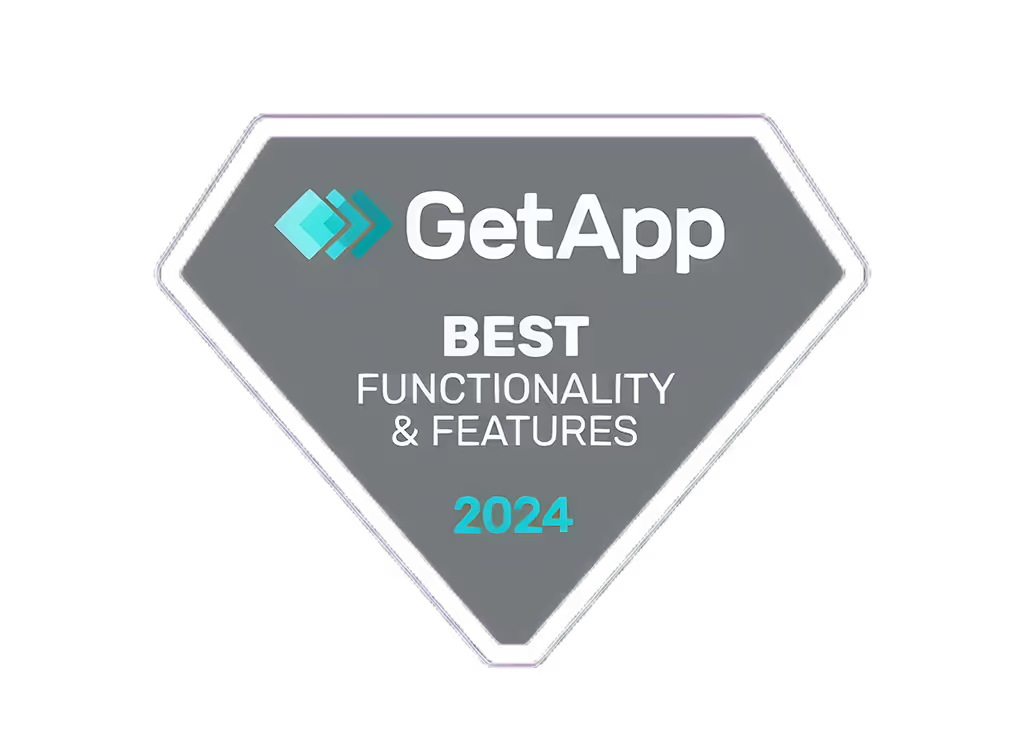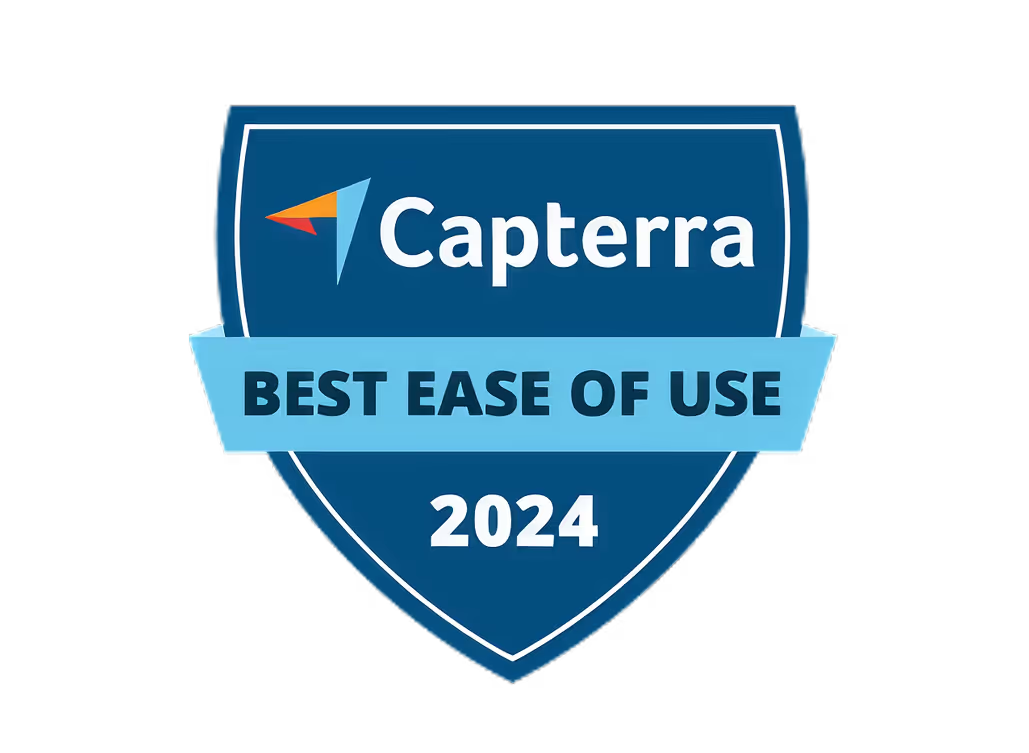Product Demo Videos: 10 Tips for Success

Creating an effective product demo video is crucial for showcasing your product, engaging customers, and driving sales. Here are the key tips for success:
- Understand Your Audience: Know your target audience's needs, pain points, and interests to tailor your video content accordingly.
- Craft a Compelling Narrative: Tell a relatable story that makes the customer the hero and creates an emotional connection.
- Highlight Key Features and Benefits: Demonstrate how your product solves problems and improves users' lives with visual aids and customer testimonials.
- Engage and Interact: Keep your audience interested with a simple, clear story and visual elements like images and animations.
- Keep it Simple and Focused: Avoid overwhelming your audience by focusing on the most important features and keeping your video concise (2-5 minutes).
- Be Flexible and Open to Change: Listen to feedback and be willing to make adjustments throughout the production process.
- Anticipate and Address Objections: Prepare responses to potential concerns and build trust with your audience.
- Practice Makes Perfect: Rehearse your script and product demonstration to deliver a confident, polished performance.
- Use Visual Aids and Supporting Materials: Incorporate screenshots, animations, and interactive elements to enhance the viewer's experience.
- Optimize and Analyze Performance: Track key metrics like views, engagement, and conversion rates, and refine your strategy through A/B testing.
By following these tips, you can create a product demo video that resonates with your target audience, effectively communicates your product's value, and drives conversions.
Quick Comparison of TipsUnderstand Your AudienceKnow your target audience's needs, pain points, and interestsCraft a Compelling NarrativeTell a relatable story that makes the customer the hero and creates an emotional connectionHighlight Key Features and BenefitsDemonstrate how your product solves problems and improves users' lives with visual aids and testimonialsEngage and InteractKeep your audience interested with a simple, clear story and visual elementsKeep it Simple and FocusedAvoid overwhelming your audience by focusing on the most important features and keeping your video conciseBe Flexible and Open to ChangeListen to feedback and be willing to make adjustments throughout the production processAnticipate and Address ObjectionsPrepare responses to potential concerns and build trust with your audiencePractice Makes PerfectRehearse your script and product demonstration to deliver a confident, polished performanceUse Visual Aids and Supporting MaterialsIncorporate screenshots, animations, and interactive elements to enhance the viewer's experienceOptimize and Analyze PerformanceTrack key metrics and refine your strategy through A/B testing
Related video from YouTube
1. Understand Your Audience
To create a successful product demo video, you need to understand your target audience. This means identifying their needs, pain points, and interests. By doing so, you can tailor your video content to resonate with them, increasing engagement and conversion rates.
Identify Your Target Audience
- Who are they?
- What are their needs and pain points?
- What are their interests?
Segment Your Audience
Segmenting your audience based on buyer personas is crucial. This includes understanding the different roles and pain points of various stakeholders. For example, if you're selling a software solution, you may need to address the technical, functional, and financial aspects of your product for different stakeholders, such as:
StakeholderPain PointsEnd-usersTechnical difficulties, user experienceManagersFunctional requirements, team productivityDecision-makersFinancial implications, ROI
By understanding your audience, you can create a product demo video that speaks directly to their needs, increasing the chances of conversion. Remember, personalization is key. Cater to your target audience by customizing your video content to their interests, preferences, and pain points. This will help you create a memorable and engaging product demo video that resonates with your audience.
2. Craft a Compelling Narrative
Crafting a narrative for your product demo video is crucial. A well-crafted story helps your audience connect emotionally with your product, making it more relatable and memorable. Here are some tips to help you craft a compelling narrative:
Start with the Familiar, Add a Twist
Begin your story with a scenario or situation your audience can identify with. Then, add an unexpected twist to keep them interested and curious.
Make the Customer the Hero
Your story should revolve around the customer, not your product. Highlight their challenges, goals, and how your product can help them overcome obstacles and achieve their objectives.
Use Emotional Connections
Emotional connections are powerful. Use storytelling techniques like anecdotes, metaphors, or vivid descriptions to create an emotional connection with your audience. This will help them remember your product and its benefits more effectively.
Keep it Simple and Honest
Avoid using complex language that might confuse your audience. Keep your story simple, honest, and relatable. Use real-life examples or case studies to demonstrate the value of your product.
Here's a summary of the key elements of a compelling narrative:
ElementDescriptionFamiliar scenarioStart with a scenario your audience can identify withUnexpected twistAdd an unexpected twist to keep them interestedCustomer-centricMake the customer the hero of your storyEmotional connectionUse storytelling techniques to create an emotional connectionSimple and honestKeep your story simple, honest, and relatable
By crafting a compelling narrative, you can create a product demo video that resonates with your audience, builds trust, and drives conversions. Remember, the goal is to tell a story that your audience can relate to, not just showcase your product's features and benefits.
3. Highlight Key Features and Benefits
When creating a product demo video, it's essential to highlight the key features and benefits of your product. This will help your audience understand how your product can solve their problems and improve their lives. Here are some tips to help you effectively highlight your product's key features and benefits:
Focus on the Most Important Features
Identify the most critical features of your product and focus on those in your demo video. Avoid overwhelming your audience with too much information.
Use Visual Aids to Demonstrate Features
Use screenshots, animations, and live demonstrations to illustrate how your product's features work. This will make it easier for your audience to understand and remember the benefits of your product.
Emphasize the Benefits
Instead of just listing off your product's features, explain how those features will improve your audience's lives. For example, if your product has a feature that saves time, explain how that will boost productivity.
Use Customer Testimonials and Case Studies
Include customer testimonials and case studies in your demo video to demonstrate the real-world benefits of your product. This will add credibility to your product, making it more appealing to potential customers.
Keep it Concise and Focused
Remember to keep your demo video concise and focused. Avoid going into too much detail or including unnecessary information. Keep your audience engaged by highlighting the most important features and benefits of your product.
Here's a summary of the key takeaways:
TipDescriptionFocus on key featuresIdentify the most critical features of your productUse visual aidsUse screenshots, animations, and live demonstrations to illustrate featuresEmphasize benefitsExplain how features will improve your audience's livesUse customer testimonialsInclude customer testimonials and case studies to add credibilityKeep it conciseKeep your demo video concise and focused
By following these tips, you can create a product demo video that effectively highlights your product's key features and benefits, making it more appealing to potential customers.
4. Engage and Interact with the Audience
When creating a product demo video, it's essential to engage and interact with your audience. This will help keep them interested, build trust, and ultimately drive conversions. Here are some tips to help you effectively engage and interact with your audience:
Keep Your Story Simple and Clear
Keep your narrative concise and easy to understand. Avoid unnecessary details that might distract or confuse your audience. Focus on the most relevant aspects of the story that highlight the value and benefits of your product.
Use Visual Aids
Visual aids like images, diagrams, or infographics can help illustrate your story and showcase your product's features and benefits. They provide a visual representation of your narrative, making it easier for your audience to comprehend and remember the information presented.
Use Clear Language
Use language that is easy to understand, especially if your audience includes individuals who may not be familiar with technical terms. Avoid using complex language or jargon that might confuse or alienate your viewers.
Here's a summary of the key takeaways:
TipDescriptionKeep it simpleKeep your story concise and easy to understandUse visual aidsUse images, diagrams, or infographics to illustrate your storyUse clear languageUse language that is easy to understand
By following these tips, you can create a product demo video that effectively engages and interacts with your audience, driving conversions and ultimately growing your business.
5. Keep it Simple and Focused
When creating a product demo video, it's essential to keep it simple and focused. A cluttered or convoluted video can confuse your audience and detract from the value of your product. Here are some tips to help you keep your video simple and focused:
Avoid Information Overload
Don't try to cram too much information into your video. Focus on the most important features and benefits of your product, and avoid unnecessary details.
Use a Clear and Concise Script
Write a script that is easy to follow and understand. Avoid using technical terms that might confuse your audience. Keep your language simple and concise.
Highlight Key Features and Benefits
Identify the key features and benefits of your product, and highlight them in your video. Use visuals and demonstrations to illustrate how your product works.
Keep it Short and Sweet
Keep your video short and to the point. Aim for a length of 2-5 minutes, depending on the complexity of your product and the needs of your audience.
Here's a summary of the key takeaways:
TipDescriptionAvoid information overloadFocus on key features and benefitsUse a clear scriptWrite a script that is easy to follow and understandHighlight key featuresUse visuals and demonstrations to illustrate how your product worksKeep it shortAim for a length of 2-5 minutes
By following these tips, you can create a product demo video that is simple, focused, and effective. Remember to keep your audience in mind, and tailor your video to their needs and interests.
6. Be Flexible and Adaptable
sbb-itb-606b7a1
6. Be Flexible and Open to Change
When creating a product demo video, it's essential to be flexible and open to change. This means being willing to make adjustments throughout the production process. Here are some tips to help you stay flexible:
Listen to Feedback
Listen to feedback from your team, stakeholders, and even your target audience. This will help you identify areas for improvement and make necessary changes to your video.
Be Willing to Make Changes
Be willing to make changes to your script, storyboard, or even your entire approach if something isn't working. This will help you avoid wasting time and resources on a video that isn't effective.
Use a Flexible Production Process
Use a flexible production process to break down your video production into smaller, manageable tasks. This will help you stay flexible and make changes as needed.
Here's a summary of the key takeaways:
TipDescriptionListen to feedbackIdentify areas for improvement and make necessary changesBe willing to make changesAvoid wasting time and resources on a video that isn't effectiveUse a flexible production processBreak down production into smaller, manageable tasks
By being flexible and open to change, you can create a product demo video that is effective, engaging, and meets the needs of your target audience. Remember to stay open to feedback and willing to make changes throughout the production process.
7. Anticipate and Address Objections
When creating a product demo video, it's essential to anticipate and address potential objections your audience may have. This involves understanding their concerns, doubts, and fears, and providing clear and concise responses to alleviate them.
Understand the Objection
To effectively address objections, you need to understand the underlying concern behind the client's objection. Often, their first objection is just a smokescreen, and they are hiding the real reason for their question.
Be Prepared for Multiple Objections
Be prepared to handle multiple objections during a demo. Isolating objections is crucial, so be prepared for a second objection right after answering the first one.
Build Trust and Credibility
By anticipating and addressing objections, you can build trust with your audience, demonstrate your expertise, and increase the chances of a successful product demo.
Here are some key takeaways:
TipDescriptionUnderstand the concernExplore the real reason behind the client's objectionBe prepared for multiple objectionsAnticipate follow-up objections and be ready to respondBuild trust and credibilityAddressing objections effectively can increase trust and credibility
By following these tips, you can create a product demo video that effectively addresses objections and resonates with your target audience.
8. Practice Makes Perfect
When creating a product demo video, practice is crucial to delivering a confident and engaging performance. The more you practice, the more comfortable you'll become with the material, and the better you'll be able to convey the value of your product to your audience.
Rehearse Your Script
Rehearse your script several times to ensure you're familiar with the content and can deliver it smoothly. Practice in front of a mirror, record yourself, or rehearse with a friend or colleague to get feedback on your performance.
Get Familiar with Your Product
Make sure you're intimately familiar with your product's features and benefits. Practice using the product, and experiment with different scenarios to demonstrate its capabilities.
Anticipate Questions and Objections
Think about the questions and objections your audience may have, and practice responding to them. This will help you address potential concerns and provide clear, concise answers.
Here are some key takeaways:
TipDescriptionRehearse your scriptPractice your script to ensure a smooth deliveryGet familiar with your productFamiliarize yourself with your product's features and benefitsAnticipate questions and objectionsPrepare responses to potential concerns and objections
By practicing your demo video, you'll be able to deliver a polished, professional performance that engages and persuades your audience. Remember, the more you practice, the better you'll become, and the more effective your demo video will be.
9. Use Visual Aids and Supporting Materials
When creating a product demo video, using visual aids and supporting materials can greatly enhance the viewer's experience and understanding of your product. These elements can help to break down complex information, illustrate key features and benefits, and keep the audience engaged.
Use Screenshots and Animations
Screenshots and animations can be used to demonstrate specific features, showcase user interfaces, and provide a more dynamic visual representation of your product. These visual aids can help to simplify complex concepts, making it easier for your audience to understand the value proposition of your product.
Incorporate Interactive Elements
Interactive elements, such as hotspots, click-and-reveal animations, and hover effects, can be used to create an immersive experience for the viewer. These elements can encourage audience participation, increase engagement, and provide a more hands-on understanding of your product.
Use Real-World Scenarios
Using real-world scenarios or case studies can help to illustrate the practical applications of your product and demonstrate how it can solve specific problems or address particular pain points. This can make your product more relatable and tangible to your audience.
Here are some key takeaways:
TipDescriptionUse screenshots and animationsSimplify complex concepts and showcase user interfacesIncorporate interactive elementsEncourage audience participation and increase engagementUse real-world scenariosDemonstrate practical applications and relatability
By incorporating visual aids and supporting materials into your product demo video, you can create a more engaging, informative, and persuasive experience for your audience.
10. Optimize and Analyze Performance
To ensure your product demo video effectively resonates with your target audience and achieves its intended goals, it's crucial to optimize and analyze its performance. Here are some key takeaways to help you do so:
Track Key Metrics
Monitor the following metrics to measure the success of your product demo video:
MetricDescriptionViewsThe number of times your video has been viewedEngagement RateThe percentage of viewers who interacted with your videoWatch TimeThe average time viewers spent watching your videoConversion RateThe percentage of viewers who completed a desired action (e.g., signed up for a trial)
Analyze Performance Data
Analyze your performance data to identify areas of improvement. For example:
- Identify drop-off points in your video where viewers tend to lose interest
- Determine which segments of your audience are most engaged
- Track the effectiveness of different CTAs and optimize accordingly
A/B Testing
Conduct A/B testing to experiment with different variables, such as:
- Video titles and thumbnails
- CTAs and button placement
- Voiceover tone and style
- Video length and pacing
By analyzing performance data and conducting A/B testing, you can refine your product demo video to better resonate with your target audience and achieve your desired goals.
Remember, optimizing and analyzing performance is an ongoing process. Continuously monitor your video's performance, make data-driven decisions, and refine your strategy to maximize the impact of your product demo video.
Conclusion
By now, you've learned how to create effective product demo videos that resonate with your target audience. A well-crafted demo video is a valuable asset that can significantly impact your business. To recap, here are the 10 tips for success:
TipDescription1. Understand Your AudienceKnow who your audience is and what they need2. Craft a Compelling NarrativeTell a story that connects with your audience3. Highlight Key Features and BenefitsShow how your product solves problems4. Engage and Interact with the AudienceKeep your audience interested and involved5. Keep it Simple and FocusedAvoid overwhelming your audience with too much information6. Be FlexibleBe open to changes and feedback7. Anticipate and Address ObjectionsPrepare responses to potential concerns8. Practice Makes PerfectRehearse your demo to ensure a smooth delivery9. Use Visual Aids and Supporting MaterialsUse screenshots, animations, and interactive elements to enhance the viewer's experience10. Optimize and Analyze PerformanceTrack key metrics and refine your strategy
By following these guidelines, you'll be well on your way to creating a product demo video that drives conversions, increases engagement, and sets your brand apart from the competition.
FAQs
How to Make a Good Product Demo Video?
To create an effective product demo video, follow these steps:
1. Set a Clear Goal: Define the purpose of your demo video and align your content with it.
2. Know Your Audience: Understand your target audience's needs, pain points, and preferences.
3. Plan Your Message: Create a structured script or storyboard that outlines key points, features, and benefits.
4. Highlight Key Benefits: Emphasize how your product solves specific problems and improves users' lives or workflows.
5. Provide a Deeper Product Description: Give a comprehensive overview of your product's features and functionalities.
6. Show the Product in Action: Use screen recordings, animations, or live demonstrations to showcase your product's capabilities.
7. End with a Clear Call-to-Action (CTA): Guide viewers to the next step, such as signing up for a trial or making a purchase.
What Should Be Included in a Demo Video?
A well-crafted product demo video typically includes:
ElementDescriptionProduct IntroA brief overview of your product and its purposeKey Features DemonstrationA showcase of your product's core features and functionalitiesReal-World Use CasesPractical examples or scenarios that illustrate how your product can be usedUnique Selling PointsWhat sets your product apart from competitorsCall-to-Action (CTA)A clear and compelling CTA that encourages viewers to take action
By including these elements, your demo video can effectively educate, engage, and persuade your target audience, driving conversions and sales.

















